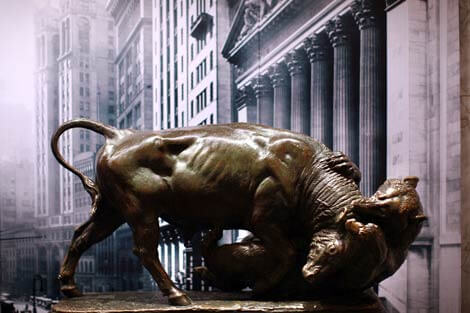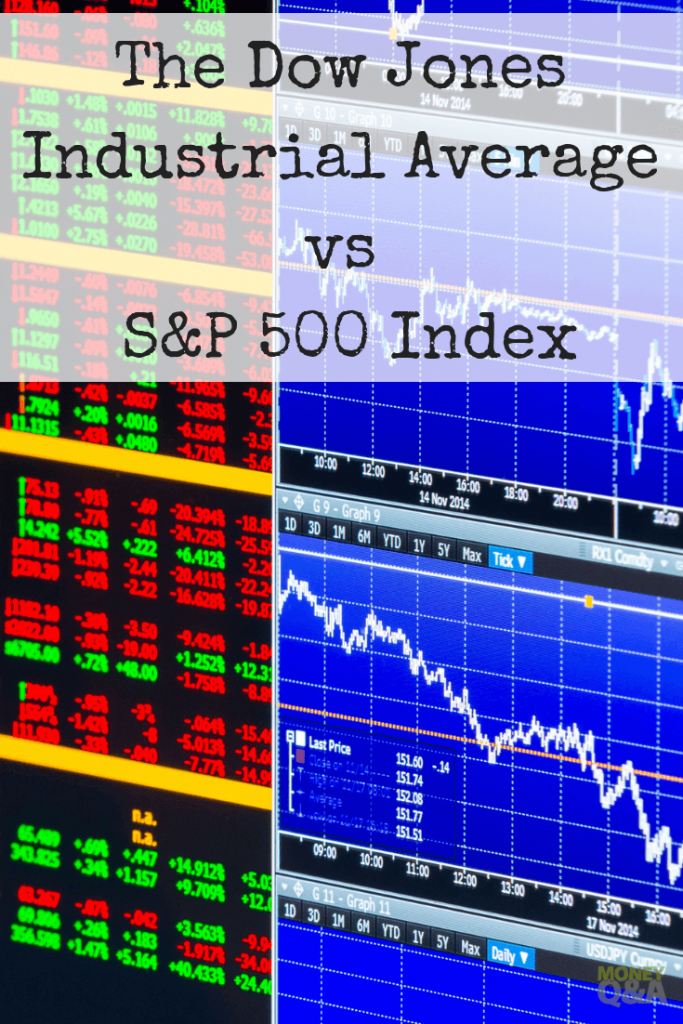
Some of the most common benchmarks in the world of stock investing are the Dow Jones Industrial Average (also referred to as just “the Dow”) and Standard and Poor’s 500 (also referred to as simply “S&P 500”). These stock market indexes are often confused for one another, but they have many differences that are important for investors to understand.
The Dow vs S&P 500
Wondering what differentiates the Dow from the S&P 500 index? Here’s what you need to know.
Dow Jones Industrial Average
The Dow Jones Industrial Average (DJIA) began in 1896 and has focused on the top 30 blue-chip stocks (high value, low volatility) ever since. The Dow is comprised of many well-known companies from a variety of sectors (excluding transportation/utilities), including Apple, The Walt Disney Company, Coca-Cola, ExxonMobil, IBM, JP Morgan Chase, McDonald’s, Nike, Pfizer, Verizon, and Wal-Mart to name a few.
Some years, no new companies are added or removed from the Dow; other years, 1-3 companies may be swapped in and out (for example, the world-renowned tech giant Apple was just added to the Dow in 2015). Major global corporations like Amazon and Alphabet (parent company of Google) are not included in the Dow index, and likely never will be due to their sky-high share prices.
If you’re looking for places to keep traditional investment accounts, you might want to check out investing with Betterment or Stash Invest.
The Dow is notably price-weighted, which equates to the sum of stock prices divided by a divisor (the “Dow Divisor”). This practice avoids potential issues with dividends affecting the Dow; only fluctuations in stock prices affect the Dow, which means companies with the highest share prices have the greatest impacts on the Dow’s movements (another possible explanation for why Amazon and Google are absent from the Dow).
At the moment, seven of the companies on the Dow have consistently raised their dividends at least once per year for the past 25 years, thereby making this index a good place to start looking for financially stable, dividend-producing stocks to add to your portfolio.

Standard & Poor’s 500 Index
The S&P 500 index began much later than the Dow – in 1957. The criteria for inclusion on this stock market index is much less restrictive compared to the Dow, as it is comprised of 500 large, publicly-traded corporations in the U.S. Stocks come from all sectors of the American economy and a committee decides what to add and what to remove from the S&P 500 each year.
In order to qualify for inclusion on the S&P 500, a company must have the following: a minimum market cap of $8.2 billion, positive earnings for the past 4 quarters or more, a public float of 50% (or more) and sufficient liquidity (as determined by the selection committee).
Unlike the Dow, S&P 500 companies are evaluated on the basis of market value instead of the individual share price. This avoids the issue of companies with the highest share prices disproportionately affecting the S&P 500 index.
Which Index Has Performed Better Over Time?
The annualized total returns of the S&P 500 tend to be slightly lower than the Dow and these differences are typically most prominent on 1-5 year timelines (after that point, their annualized returns are very close to each other).
The Dow’s price-weighting methodology is oftentimes criticized as outdated because it doesn’t adequately account for 1-year total returns from an individual company (which could have less weight in the Dow, even if it produces substantially higher returns than another Dow stock).
Why Does This Matter for My Investment Portfolio?
On a long enough timeframe, aligning your portfolio with the Dow instead of the S&P 500 (or vice versa) won’t matter very much because their gains are very similar over time. Nevertheless, the Dow continues to outperform the S&P 500 nearly every year, which can have considerable implications for your investment portfolio if you aren’t paying close attention to these indexes.
The S&P 500 is much more tech-oriented than the Dow, which can have both good and bad implications for investors. On one hand, more tech stocks could mean faster growth and higher returns for innovative companies that research and develop revolutionary technological advancements, such as new healthcare tech or virtual reality developments. On the other hand, tech stocks are typically much more volatile than Dow giants like Wal-Mart and The Walt Disney Company, which could lead to greater (and more frequent) fluctuations in your portfolio.
Ultimately, there’s no “right” or “wrong” index to choose from when it comes to optimizing your portfolio for higher returns on investment. It’s still useful for investors to understand the differences between the Dow and S&P 500 in order to more accurately assess which types of stocks, market conditions, companies, and other factors could lead to the best returns possible on your investments.

